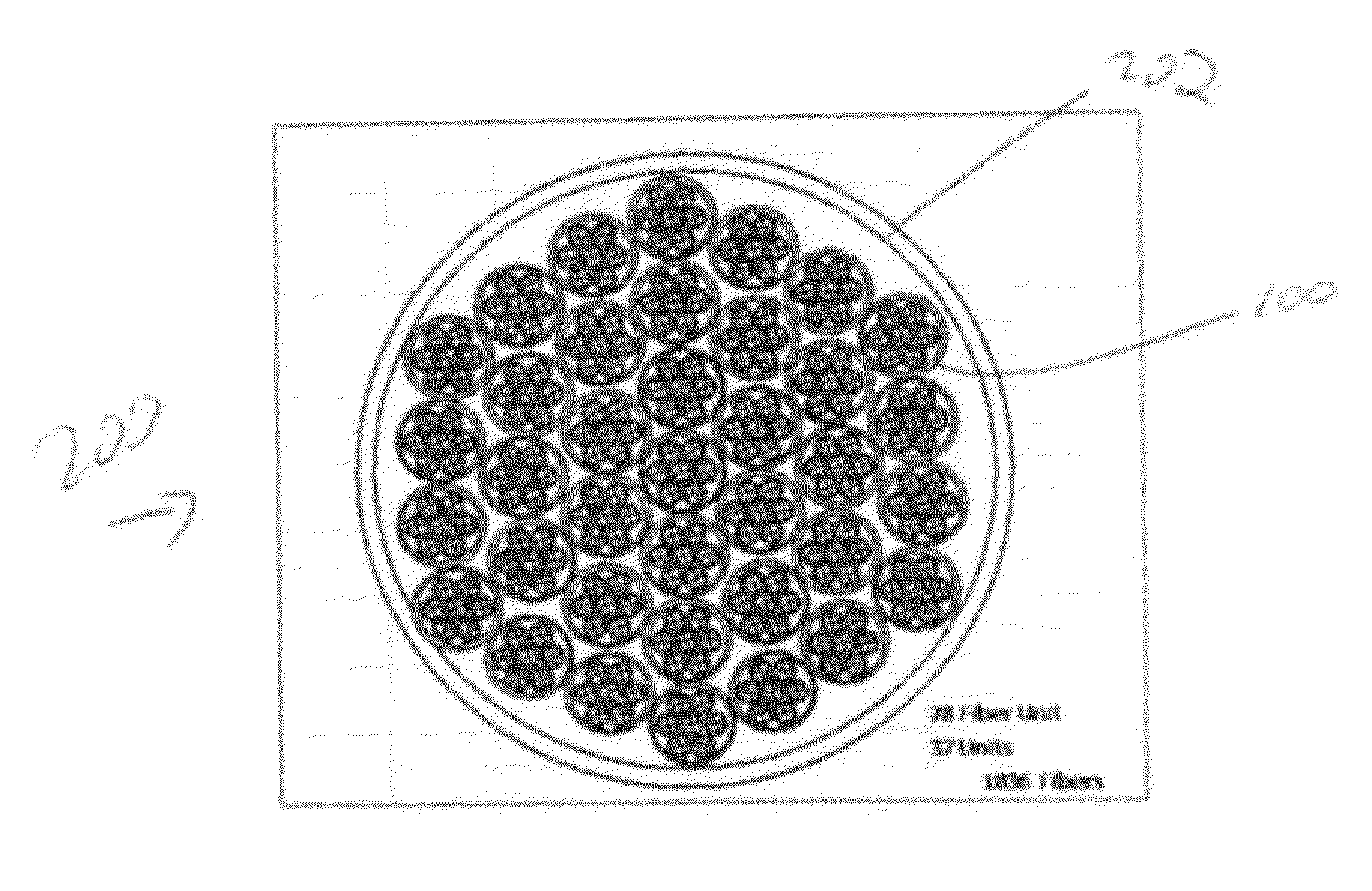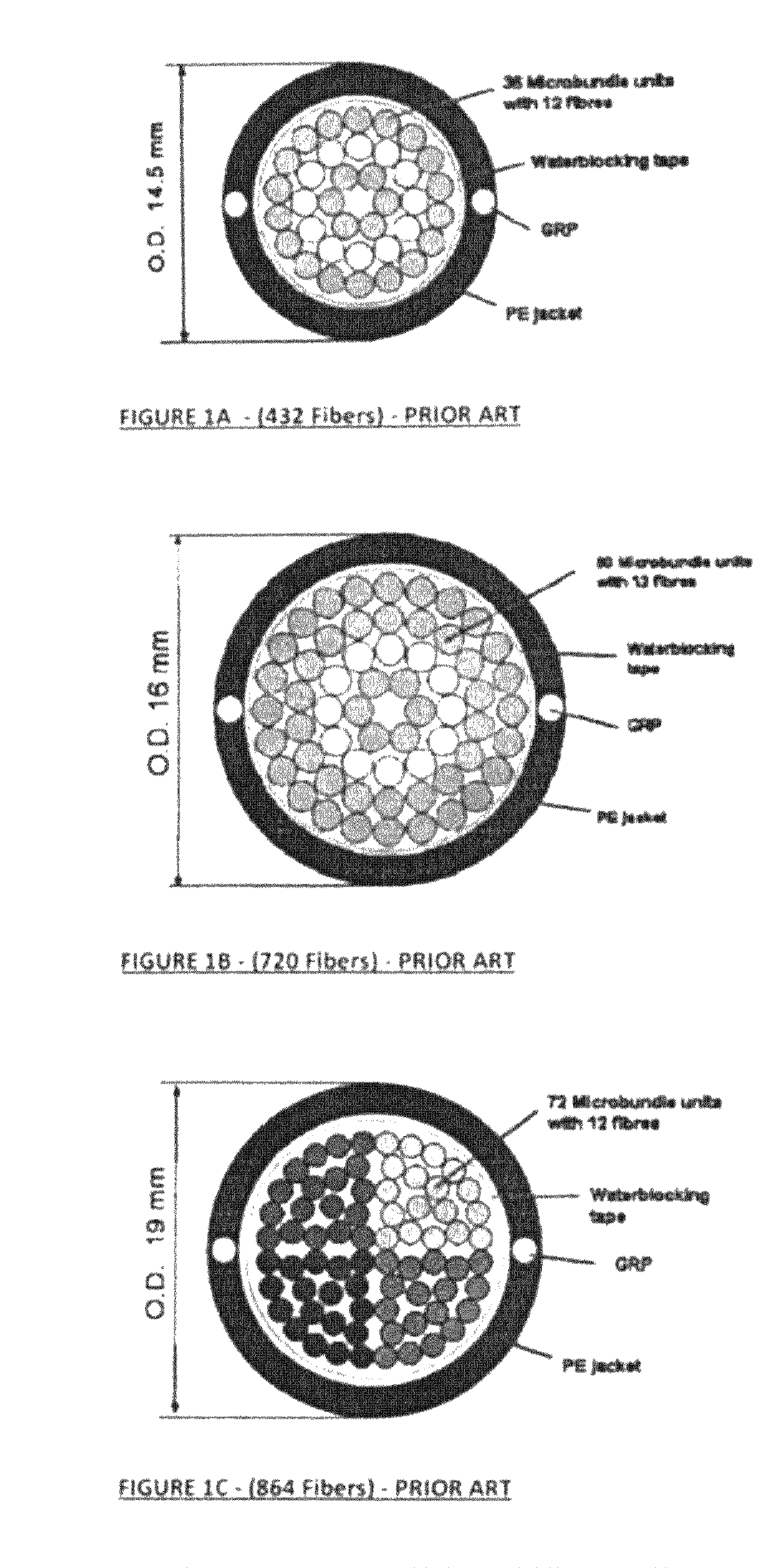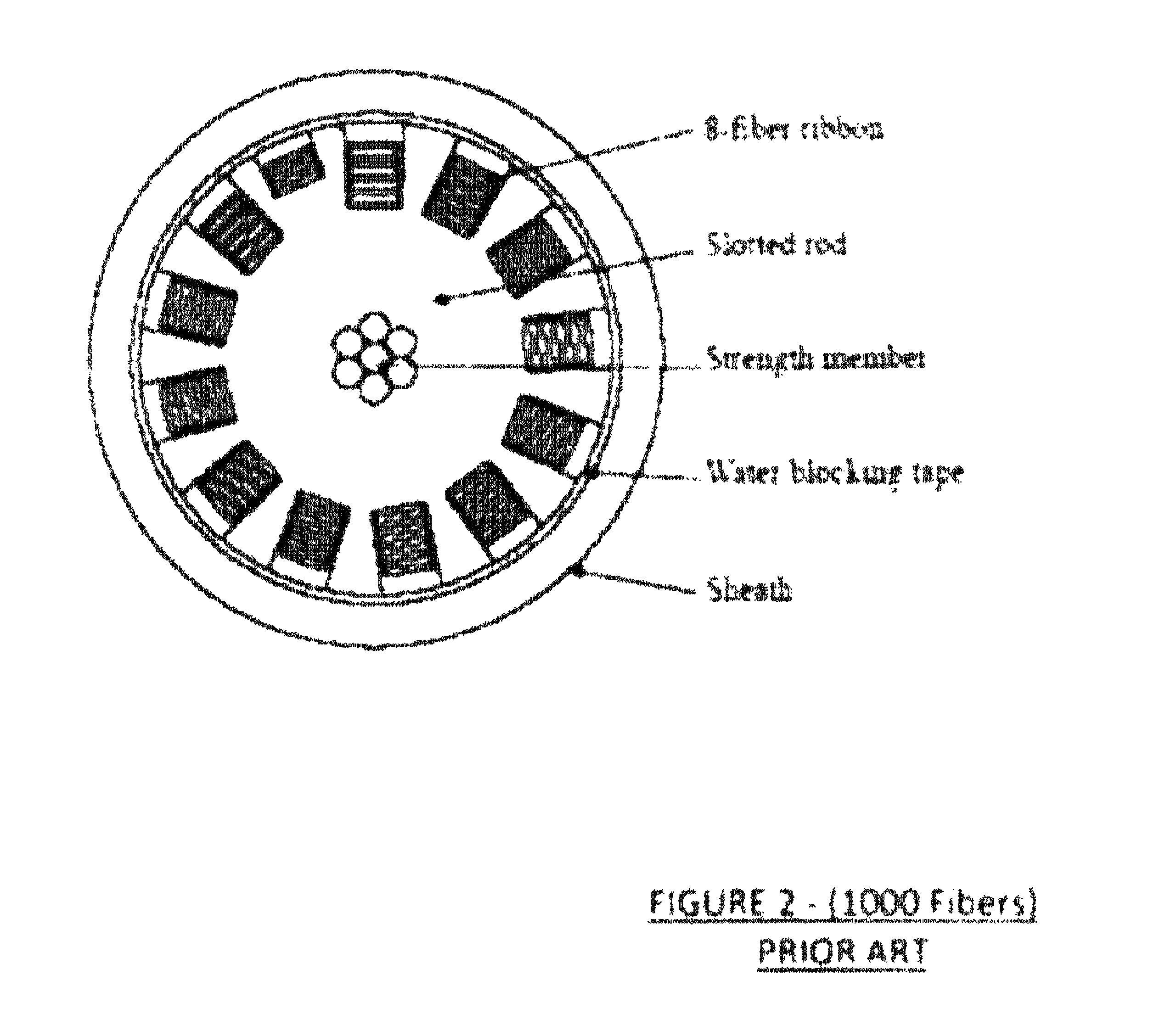Expanded four fiber unit cable for increased fiber count cables having increased flexibility and fiber strength utilization
a fiber count and fiber technology, applied in the field of fiber optic cables, can solve the problems of increasing the rigidity of high fiber count cables, and increasing the difficulty of bending, so as to increase flexibility, reduce stiffness, and increase the fiber count
- Summary
- Abstract
- Description
- Claims
- Application Information
AI Technical Summary
Benefits of technology
Problems solved by technology
Method used
Image
Examples
Embodiment Construction
[0023]In one embodiment as shown in FIG. 3 a basic subunit 10 is shown having four fibers 12 inside. In the present arrangement fibers 12 are typical UV coated optical fibers with 250 microns (0.25 mm) diameter. However, larger tight buffer fibers (600 micron to 900 micron) may also be used in each of the below described cables. Fibers 12 may have a typical tensile rating requiring about 430 grams of tension to reach the typical safe elongation target of 0.5%, however they may be of later designs that can withstand 0.6% to 1% elongation (under even greater grams of tension).
[0024]Around the four squarely arranged fibers 12, is a polymer jacket 14 to form subunit 10. Jacket 14 may be made from PVDF (Polyvinylidene Fluoride) or FEP (Fluorinated Ethylene Polymer), or other non-halogenated polymers including polypropylene (PP), FRPVC (Fire Resistant Polyvinyl Chloride) or polyethylene (PE) that have good fire resistant properties (such as FR versions of PE or PP). This polymer selection...
PUM
 Login to View More
Login to View More Abstract
Description
Claims
Application Information
 Login to View More
Login to View More - R&D
- Intellectual Property
- Life Sciences
- Materials
- Tech Scout
- Unparalleled Data Quality
- Higher Quality Content
- 60% Fewer Hallucinations
Browse by: Latest US Patents, China's latest patents, Technical Efficacy Thesaurus, Application Domain, Technology Topic, Popular Technical Reports.
© 2025 PatSnap. All rights reserved.Legal|Privacy policy|Modern Slavery Act Transparency Statement|Sitemap|About US| Contact US: help@patsnap.com



